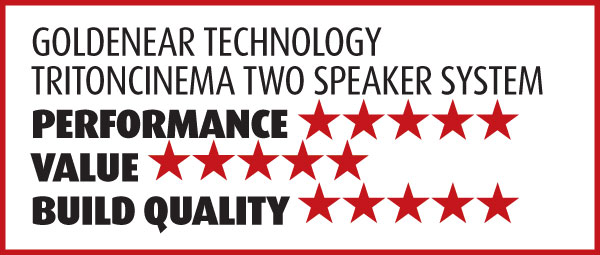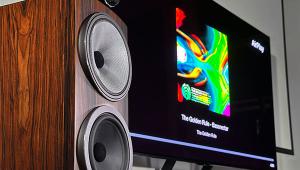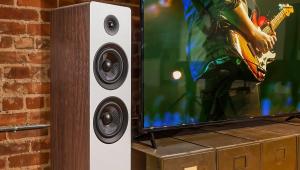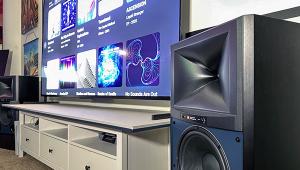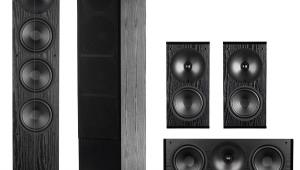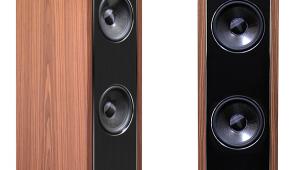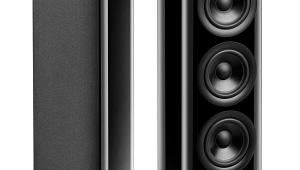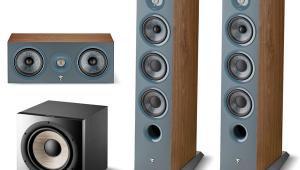GoldenEar Technology TritonCinema Two Page 3

Of course, that’s with two-channel material. For movies, you can take all that sweet goodness and multiply it since there’s a similar HVFR tweeter in the SuperSat 50C and the SuperSat 3s. Shortly after the oft-demoed echo game (“not drums and beans for supper again!”) scene in House of Flying Daggers, during the blind girl’s sword fight with the captain, the protagonists enter a bathing area. It’s filled with acoustic reflections caused by flowing water and swinging beads in the doorways. I don’t think I’ve ever heard a system—and definitely not one at this price—that was so sweet and light at reproducing these high-frequency effects in every direction. It was much the same with Inception during the first dream lesson when everything around the dreamer begins to explode. Nothing seemed forced or strained. It was all as natural as can be. (Well, as natural as it can be when all the buildings and streets around you are exploding.) Speaking of explosions, in U-571 (an oldie but still a goodie on BD), the depth charges were exceptionally moving—literally. They were some of the best I’ve heard or felt. The subs in the Triton Two towers are seemingly unstoppable. They sound both powerful, which is the easier thing to do, and controlled, something that isn’t as easy. Even though the Triton Two isn’t tiny, it borders on the unbelievable that a pair of speakers of this size can produce bass like this. They and the rest of the drivers played about as loudly in my room as I could stand.
If I have a knock at all (and it’s a very soft knock), it’s that I’d like to see GoldenEar make a beefier center channel to match the Triton Two. It’s not that the SuperSat 50C isn’t good—it’s a fantastic center channel and would likely make a great LCR in a system with a subwoofer. But the Triton Two is so damn good that you can find yourself wanting more when you go from two-channel music to multichannel and the voice shifts from a phantom center to a discrete center. There’s just a tad more strength in the lower midbass region of the Triton Twos that gives vocals a bit more heft in two-channel mode. This isn’t surprising considering that the SuperSat 50C is only two-fifths the price of a Triton Two—and maybe one-tenth the overall size. It’s certainly not a deal-breaker for this system, it’s just an area where the system could be even better. Since it’s so minor, you probably won’t notice it with most multichannel musical selections. I only experienced it when I switched directly between two-channel and multichannel on the same source material—something most people will never do. I never found it to be a noticeable issue with movies. If you’re a purist, you probably listen to music in two-channel, anyway. Of course, the best solution would be to use a third Triton Two across the front; then you’d get the best of everything. Still, it’s hard to fit a tower center channel into most rooms. However, at the price point of this system with the SuperSat 50C, it’s almost unfair to even mention it.
Four Will Get You Five
Expectations are an interesting thing. Something good can still be a bit disappointing if your expectations were too high to begin with. Likewise, something pretty lousy might appear to be better than it otherwise would if you had super-low expectations of it from the start. A reviewer must make every attempt to eliminate biased expectations that might cause him to unfairly rate a product (either good or bad), but it’s impossible to totally avoid it. I have to tell you that before the GoldenEar speakers arrived, I struggled hard to keep my expectations in check. But knowing the reputations of Messieurs Gross and Givogue, it was hard for me not to expect something good—really good. I’m happy to say that my expectations were not met. The GoldenEar TritonCinema Two system doesn’t sound good or even really good; it sounds phenomenally good. It’s difficult to build a great speaker, but if you throw enough money at it, you can get there eventually. The thing that makes the GoldenEar system such an astounding achievement is the fact that it sounds like a five-figure system and yet costs less than $3,500. That’s the equivalent of getting a Tesla Roadster for the price of a Toyota Prius.
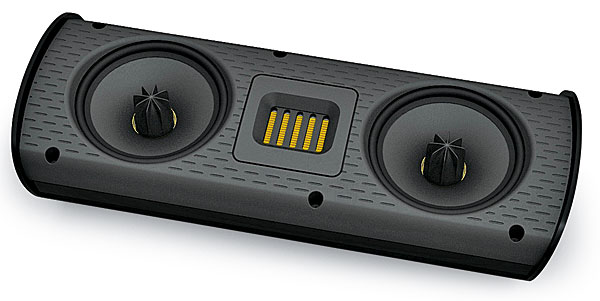
I don’t like being wrong, and when I am, I like even less to admit it. But in this case, being wrong about the world not needing another speaker line is a blessed thing. Rather than being another set of black boxes fighting for space on a retailer’s shelf, I think the introduction of the GoldenEar speaker line will be like mainlining a pure shot of guarana-and-caffeine-laced energy drink into the jugular vein of the audio industry. The combination of appearance, performance, and price is flat-out spectacular and will set lots of other companies on a chase to close the gap. That kind of competition will be good for everybody.
One of Sandy Gross’ dreams was to build a true high-end speaker that was actually affordable. Someone needs to pinch the man because his dream just became reality.
